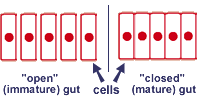You will need:
1/3 cup pine nuts, used flax seed, not bad but not the same effect
4 tablespoons olive oil or butter
2 large onions chopped
3-4 cloves of garlic minced
2 bunches of beets, I used 1 bunch but I wished I used 2 because it is so good! Peel and slice into thin rounds then cut in half
12 oz(1 box) of pasta your choice
1/3-1/2 freshly shredded parmesan cheese. The real stuff not that powdered cheese flavored crap.
1) Toast pine nuts or flax seeds until lightly brown, set aside
2) Saute onions until soft, add garlic and beet greens.
2 bunches of beets, I used 1 bunch but I wished I used 2 because it is so good! Peel and slice into thin rounds then cut in half
12 oz(1 box) of pasta your choice
1/3-1/2 freshly shredded parmesan cheese. The real stuff not that powdered cheese flavored crap.
1) Toast pine nuts or flax seeds until lightly brown, set aside
2) Saute onions until soft, add garlic and beet greens.
3) boil beets until soft, reserve 1 cup beet water, drain and set aside.
4) Boil pasta, drain and return to pot. Combine pasta, sautéed greens, beets, flaxseeds, cheese and 1/4 cup beet water until well incorporated.






















